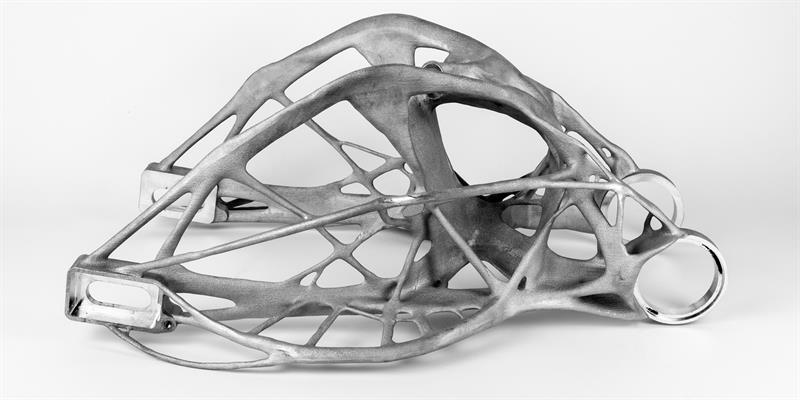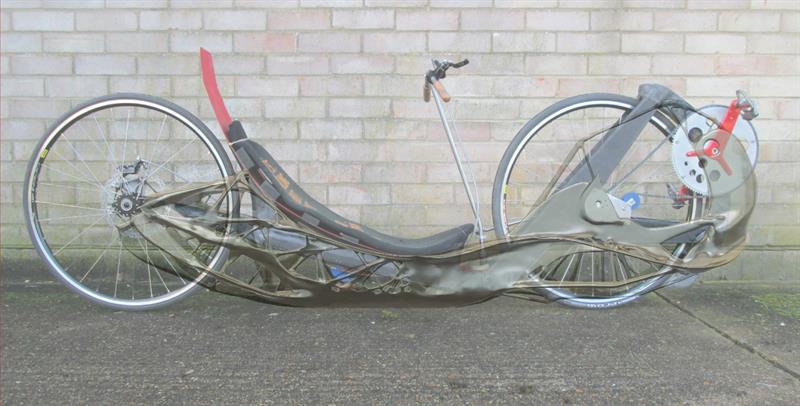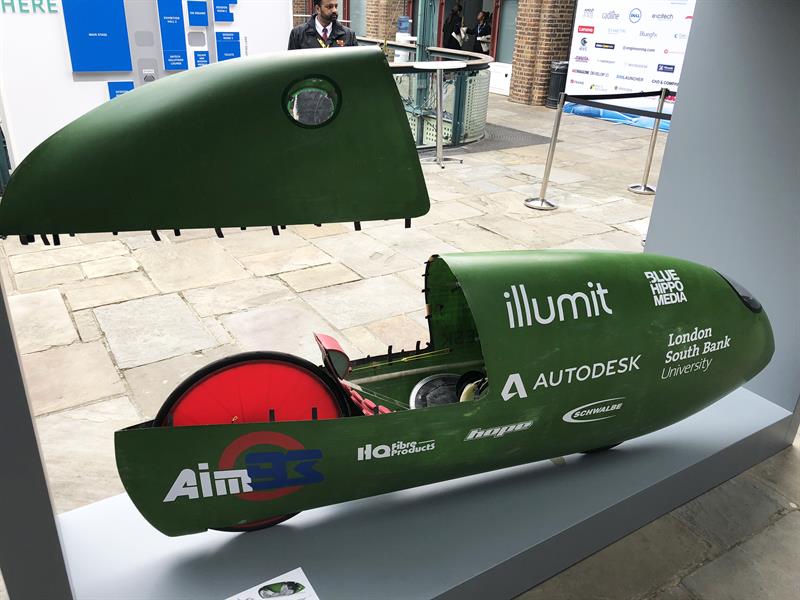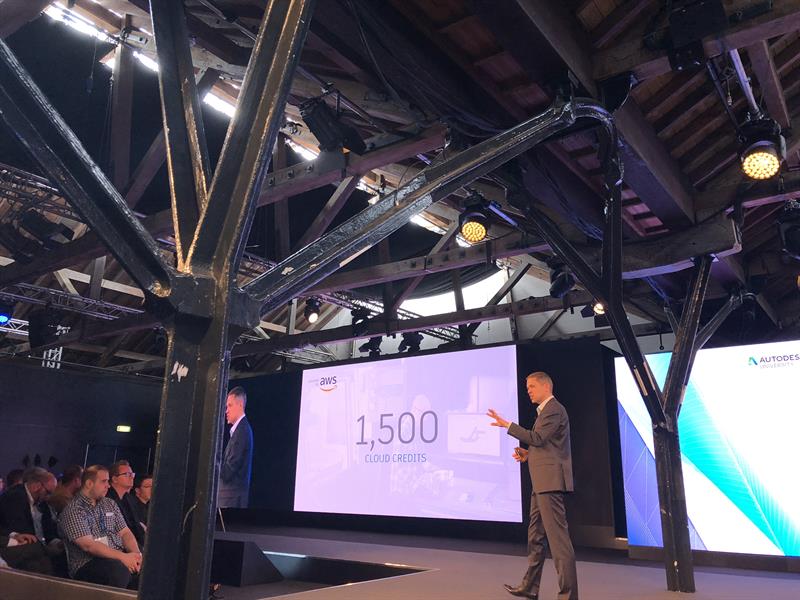This move is designed to promote generative design, a new technology that uses cloud computing and artificial intelligence to accelerate design exploration beyond what is currently possible. By working with AWS, Autodesk hopes to offer even more compute power to the first 1,000 new subscribers who want to get started with generative design. The programme began on 1st July and is available to new annual subscribers of Fusion 360 Ultimate, ending on 30th September or as soon as 1,000 new subscriptions have been claimed.
With AWS, Autodesk has long been working toward providing solutions that leverage the broad connectivity and raw computing power of the cloud. Generative design is the latest technology to join its lineup of cloud-powered manufacturing tools. Designers and engineers can use it to quickly generate a set of high-performance design options based on their specific constraints (like materials, weight, or manufacturing methods). The cloud allows for rapid exploration of dozens or even hundreds of possible solutions in the design space. Engineers can then consider and judge between the different options that best meet their needs. Customers like GM, Airbus and Lightning Motorcycles have already invested in generative design to develop products that are higher-performing, lighter, or require fewer parts than their predecessors.
 “The power of the cloud is a key enabler to bring generative design technology to designers and engineers in a fast and cost-effective way,” says Josef Waltl, Global Industrial Software Segment Lead at AWS. “With the close collaboration between Autodesk and AWS, customers will be enabled to design and produce highly innovative products which outpace existing design in economic and environmental dimensions.”
“The power of the cloud is a key enabler to bring generative design technology to designers and engineers in a fast and cost-effective way,” says Josef Waltl, Global Industrial Software Segment Lead at AWS. “With the close collaboration between Autodesk and AWS, customers will be enabled to design and produce highly innovative products which outpace existing design in economic and environmental dimensions.”
In April, Autodesk officially introduced generative design as part of its Fusion 360 Ultimate offering— an all-in-one product development tool that lets you design, engineer and manufacture products in a single, cloud-based environment. To perform generative design studies, users can apply cloud credits (1 cloud credit=$1) to run the service in the cloud without disruption or delay. Every subscriber already receives 1,000 cloud credits with their Fusion 360 Ultimate subscription.
Fusion 360 Ultimate subscribers can use cloud credits to perform generative design studies (25 cloud credits), explore options, and download their chosen design (100 cloud credits). Customers who take part in this offer will be able to complete several design studies with their 1,500 credits.
 One of the first customers to take advantage of this offer will be Aim93. The project, led by bike designer Mike Burrows and fellow engineers Barney Townsend and Glen Thompson from London South Bank University, Aim93 is on a mission to make the fastest human powered vehicle (HPV) – a recumbent bike designed to break the world’s land speed record by reaching 93mph over a 200m sprint. Numerous design challenges are involved– the frame must be lightweight yet stiff, while the drivetrain and components need to operate with minimal friction. “Fusion 360 has filled a gap that addresses all of our primary modeling needs, making our workflow massively easier, pleasurable and more efficient. The arrival of generative design elevates the potential for innovation in our outcomes to a whole new level.” says Townsend. “We’re really excited about the early results we’ve had so far with generative design and we’re confident that with some further refinement to the model and the inputs, we can achieve our goal of a super lightweight, highly stiff frame that will enable us to break the world record.”
One of the first customers to take advantage of this offer will be Aim93. The project, led by bike designer Mike Burrows and fellow engineers Barney Townsend and Glen Thompson from London South Bank University, Aim93 is on a mission to make the fastest human powered vehicle (HPV) – a recumbent bike designed to break the world’s land speed record by reaching 93mph over a 200m sprint. Numerous design challenges are involved– the frame must be lightweight yet stiff, while the drivetrain and components need to operate with minimal friction. “Fusion 360 has filled a gap that addresses all of our primary modeling needs, making our workflow massively easier, pleasurable and more efficient. The arrival of generative design elevates the potential for innovation in our outcomes to a whole new level.” says Townsend. “We’re really excited about the early results we’ve had so far with generative design and we’re confident that with some further refinement to the model and the inputs, we can achieve our goal of a super lightweight, highly stiff frame that will enable us to break the world record.”
To achieve this, they’re relying on decades of experience and the latest digital design and simulation tools from Autodesk, a team sponsor.
For context, how fast can a person typically go in a vehicle operated under their own power? Most people on a conventional bicycle can easily get to 10mph on flat terrain. Competitive cyclists can hit speeds of 25-30mph without too much trouble.
 When most people think of cycling, whether that’s a trip to the park or the Tour de France, they think of what are called ‘upright’ frames, in which the rider is perched above the two wheels. This design has the advantage of enabling good visibility as well as allowing riders to use their own mass to drive the pedals, which is why most people stand to pedal uphill. But when it comes to achieving maximum speed, uprights have a big flaw: the rider produces a large profile, which causes significant drag.
When most people think of cycling, whether that’s a trip to the park or the Tour de France, they think of what are called ‘upright’ frames, in which the rider is perched above the two wheels. This design has the advantage of enabling good visibility as well as allowing riders to use their own mass to drive the pedals, which is why most people stand to pedal uphill. But when it comes to achieving maximum speed, uprights have a big flaw: the rider produces a large profile, which causes significant drag.
Uprights are still used in competitive cycling because the sport is so highly regulated—innovation is purposely restricted to promote competition. They want to ensure that the riders are being tested in a race, not the equipment. In the world of HPVs, though, the rider is secondary to the vehicle, and innovation is not only tolerated, it’s expected—in many ways, innovation is the main event.
It’s rare to see an upright bike at an HPV competition. Instead you’ll see recumbent bikes because their aerodynamic profile is so much more streamlined. And the fastest vehicles are fully encased in farings that further reduce drag. You certainly won’t get any wind in your hair riding these machines, but it’s hard to argue with the results: velocities that exceed highway speed limits reached just by pedalling.
To make the Aim93 frame, Burrows used his normal approach: the design started on a large drafting board in the gantry office above his workshop; it then progressed through various lash-up prototypes to a track-ready frame design built by hand by wrapping carbon fiber around foam cores.
Thompson, meanwhile, got busy on the faring, using a much more digital approach: he took the published data for the record holder at the time, Varna, and ran Computational Fluid Dynamics (CFD) simulations on it, then started making iterative changes to achieve aerodynamic improvements.
“Aerodynamics of HPVs is a unique field because they have the lowest extreme of drag forces for any human based vehicle (the fastest production cars at 93mph have 80 times more aerodynamic drag),” says Thompson. “Setting up a CFD model needs highly detailed settings to arrive at reliable data. The software tends to underestimate forces, and for many HPV teams in the past, the move from CFD to road test data has led to disappointing results. I have always tried to work to the most pessimistic interpretation of the digital simulation. Autodesk CFD Motion, and their expert Heath Houghton, enabled us to verify our results and build confidence in the predictions.”
 In 2016, the team brought on Barney Townsend, another designer/engineer and 10-year colleague of Thompson’s at London South Bank University. They had previously collaborated to develop the teaching of Autodesk applications at the University, particularly in CAD modelling and simulation. Townsend’s role, among others, was to improve on Burrows’ hand-crafted frame using Autodesk’s generative design technology, which is now part of Autodesk Fusion 360 Ultimate, a cloud-based product development platform.
In 2016, the team brought on Barney Townsend, another designer/engineer and 10-year colleague of Thompson’s at London South Bank University. They had previously collaborated to develop the teaching of Autodesk applications at the University, particularly in CAD modelling and simulation. Townsend’s role, among others, was to improve on Burrows’ hand-crafted frame using Autodesk’s generative design technology, which is now part of Autodesk Fusion 360 Ultimate, a cloud-based product development platform.
Generative design uses machine learning and the power of the cloud to generate design solutions that a human would never consider—hundreds or even thousands of them. The designer then works collaboratively with the software, choosing trade-offs to achieve the goals they establish for size, weight, material, manufacturing method, and more.
“I started out by defining the loads that the frame would be subjected to, and blocking out the areas that were off-limits, such as the space for the rider, wheels, and chain set, and the outer boundary limitation of the aerodynamic shell,” says Townsend. “Basically, once the software knows the spatial and load conditions it must work within, it fills this with material and then nibbles away at it, continuously analysing the internal stresses to remove as much mass as possible without going below the specified safety factor for the structure to do its job. It then presents the designer with a series of outcomes from which to make a decision.
“Fusion 360 does a great job of combining – fusing – elements of different software in one package,” Townsend says. “And the fact that it’s available free to all students, as well as to companies with less than US$100,000 in revenue means that not only can I teach it in my university classes, my students can use it in their start-ups after they graduate.” He says that it has even changed the way he reviews student work, since students can share their models with him via web browser.
The big race comes at Battle Mountain, Nevada in September, sponsored by the International Human Powered Vehicle Association. There, the Aim93 team wants to set the new record for speed, period. On a uniquely flat and straight section of Nevada highway, they’ll have five miles to get the vehicle up to top speed, which will then be measured for 200m. So far, the 90mph mark has proved elusive for HPVs but the Aim93 team thinks they can beat that significantly. “All our simulations show that we should be able to hit 93,” says Townsend.





